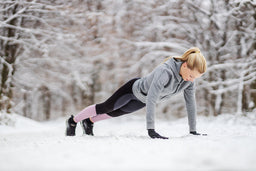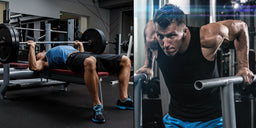
Can You Train For Strength AND Endurance?
It seems like one of those fitness goals that shouldn’t be possible. Strength and endurance demand different types of training. But we’re big fans of pushing the limits of human endeavour. So let’s find out. Can you train for strength and endurance at the same time? If so, how?
Hats off to multi-discipline athletes. Top of their game in track running and throwing heavy things a long way. But are there any sports in the world that combine true endurance and heavy-lifting strength work?
We’re not sure how you’d train for such a thing. But the challenge of concurrent training (training for strength and endurance at the same time) is a valid concern for any of you who want to train for a running or cycling event – and not lose strength. Or build a bit of muscle in the gym, but not lose speed.
Let’s get into it
What the science says
One of the first studies of “concurrent training” was done in 1980 (https://pubmed.ncbi.nlm.nih.gov/7193134/). This study concluded that training for strength and endurance at the same time is detrimental (usually to strength gain) because the training is contradictory.
Another study carried out nearly 40 years later threw new light on Hickson’s earlier findings (https://pubmed.ncbi.nlm.nih.gov/29809072/). This 2019 paper suggested that adding a strength-training mesocycle could improve endurance performance, mainly by improving efficiency.
How to train for strength
Strength training demands placing the body under heavy load on a regular basis, with enough rest and nutrition to facilitate adaptations. These neuromuscular adaptations result in extra muscle tissue which leads to muscle size and mass, strength, and power.
How to train for endurance
On the other hand, training for endurance targets the cardiovascular system more than the skeletal muscles. This style of training improves your CV endurance and muscular endurance (your muscles’ ability to work continuously without fatigue).
You can see how the two training goals don’t have a lot in common. But does that mean concurrent training is always a bad idea?
The 3 variables of concurrent training
Training order – research suggests that doing strength training first, endurance training second has better results and less negative impact
Recovery time – if strength is your focus, keep at least 6 hours between training strength and endurance
Training modality – want to maintain strength gains during a concurrent training cycle? Use biking, rather than running, for your endurance work.
Who benefits from concurrent training?
The body of research around concurrent training is good news for endurance athletes who need to be strong and efficient (cyclists, triathletes). But what does it mean for strength and power athletes?
If you’re training really hard for both (rather than strength training with a bit of endurance work, or the other way round), your strength gains will plateau. That’s not to say you can’t gain strength, but you should expect your gains to be curtailed by the demands of endurance training.
Should you try it?
It’s not all doom and gloom. Concurrent training can have a lot of benefits to your strength and fitness if you’re willing to accept a small compromise on both ends of the spectrum. If you want to win powerlifting events or be on the podium at a cycling race, it’s not the right approach.
Have you ever run a block of concurrent training? We’d love to hear about it – get in touch to share your training story.
































